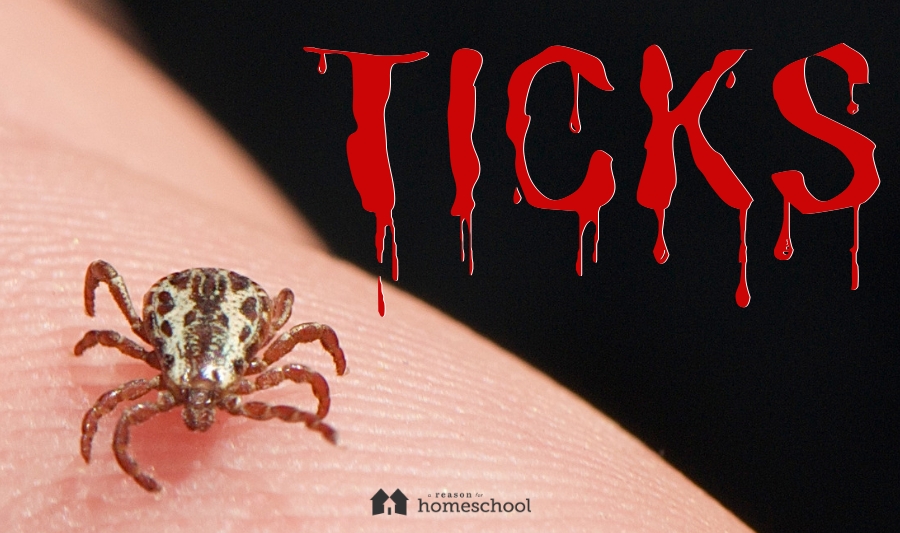What do you call a tick that lives on the moon? A Lunatic!
A few years back, I was educated (by a third grader!) in the surprising fact that ticks are part of the arachnid family. What?!? For some reason, I’d always thought they were insects. Of course, I had to look it up … and sure enough, he was right. In their larva stage, ticks only have six legs, but as nymphs and adults, they have eight. They’re classified as arachnids because apparently they fit the criteria of having two body segments, eight legs, no wings or antennae, and their inability to chew.
If only they couldn’t bite either, huh?
It seems tick-borne illnesses are becoming more and more problematic around the country. With almost 900 different species of tick worldwide, I suppose it’s not surprising. Here in the continental United States alone, we have 90 species to contend with! Many of these can carry diseases that can be transferred through a bite to both human and animal hosts.
Today I’d like to share a bit of information about the diseases we can get from ticks that can be serious and even fatal. I’ll outline some of symptoms we as parents should look out for, as well as some helpful preventative advice from parents that have dealt with, or are still dealing with, the aftermath of this sneaky, silent parasite.
I’d like to start by recommending that you visit the CDC’s website, where they have an exhaustive list all of the tick-borne illnesses here in the United States, and the general area where these ticks live.
Unless you’re a hermit who never goes outside, you will be around ticks this summer. While they prefer a more warm, humid environment, ticks are common in many—if not most—wooded areas with shrubs, weeds, and tall grasses. If you’re anything like me, you attempt to keep your kids “on the path” when you’re in areas like this; it just takes one encounter with seed ticks to understand why! (Speaking of seed ticks, though, should you ever find yourself the victim of a few hundred creepy crawlies barely big enough to see, my sister shared a brilliant lint roller trick with me. Just roll the sticky wand all over you, and it licks them right off. Might make a handy addition to your car’s first aid kit.)
We’ll discuss what to do after the fact in a minute, but prevention is always best. A few of the steps you can take to avoid an encounter with ticks are:
- Keep your grass cut short. Hot, dry conditions will kill ticks, so cutting your grass takes away their shade.
- Use tick sprays containing picaridin, directly on the skin or even on clothing and camping gear. I’m not big on spraying poison on or around my kids, but when you weigh that against the possibility of a lifelong disease, it’s a different story. While I would still hesitate to frequently spray it directly on their skin, I’d be happy to spray their shoes, pants, tent, chair, etc. There are also several natural remedies like tea tree, lemon, eucalyptus, and cedar oil that are said to work—but I don’t know from experience which ones actually do, so I hesitate to recommend those options in what could be a literal life-or-death decision.
Unfortunately, keeping the ticks off the kids takes dedicated effort. We can’t just place a few drops on their necks once a month, like you can with the family pets. But while we may try our best to prevent them, ticks happen. It’s wise to teach your children to check themselves for ticks daily in the summer months. If your child is young, you may need to help them. Because many of the diseases we can get from ticks require a long feeding time (36-48 hours) before they can transfer the bacteria and viruses that make us sick, time is definitely of the essence. Besides a visual check, I teach my kids to run their hands through their hair to feel for bumps they can’t see, check the belly button and underwear line especially, and everywhere else. It’s helpful for them to have access to a mirror to do these checks. They can see more of their back that way.
What should we do if we happen to find a tick? First of all, tell your children to always come to you before removing it. You don’t want them to make an attempt, only to partially remove it and leave part of the head buried in their skin. While there are various recommendations circulating the internet, the safest, most effective way to remove a tick is still with those handy tweezers. Using tweezers to grasp the tick as close to the skin as possible, pull steadily upward without twisting or jerking. The twisting and jerking motions can cause the tick’s mouth parts to rip off and remain in the skin.
Once removed, place the tick in a small zipper bag and write the date on it, just in case your child develops symptoms later on and you suspect a tick-borne illness. If that happens and you’ve kept the tick, take it with you to the doctor so they can test it. Many tick-borne illnesses have very similar symptoms, but different antibiotics are most effective for different diseases. Having the tick itself will save valuable time for a quicker diagnosis and treatment.
Gleaned from the CDC’s official website, here are a few of the most common tick-borne illnesses to watch out for:
- Lyme disease: Lyme is probably one of the best known of the diseases spread by infected ticks and is caused by the bacterium Borreliea burgdorferi. It is spread by the infected Black Legged Deer tick:
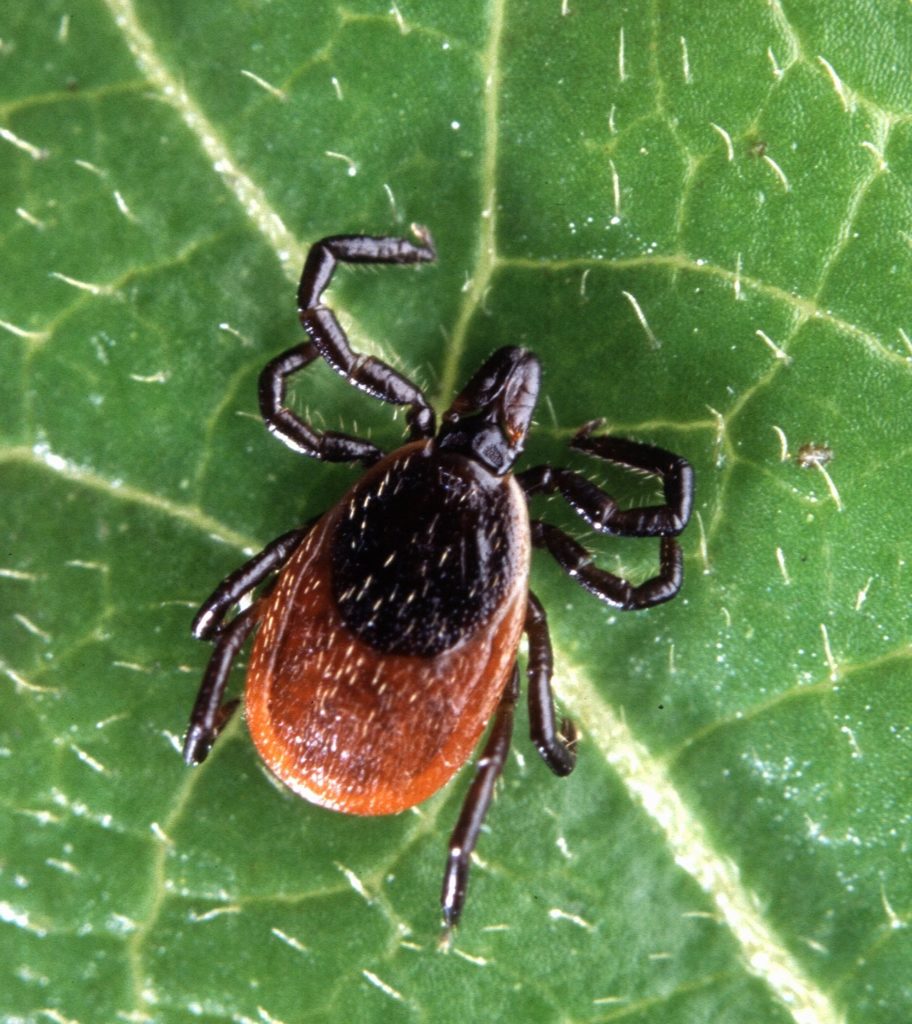
Black Legged Deer tick
Symptoms to look out for are fever, fatigue, headache, and a skin rash. (Click here to see photos of some typical Lyme disease rashes at the CDC site.) Treated with antibiotics straight away, it can be completely cured. If left untreated, however, it can spread into your joints, heart, and nervous system and wreak havoc for years to come. - Rocky Moutain Spotted Fever (RMSF) : Among the deadliest tick-borne illnesses we have here in the United States. It’s a bacterial disease with similar early symptoms of a fever, headache, and rash which usually develops two to four days after the fever began. Things can quickly progress to nausea and vomiting, stomach and muscle pain, and lack of appetite. It is also treated with antibiotics, and known to be deadly if not treated quickly. Even if one recovers they can be left with permanent damage including amputation, paralysis, hearing loss, and mental illness. It is spread by several different ticks:
- American Dog tick
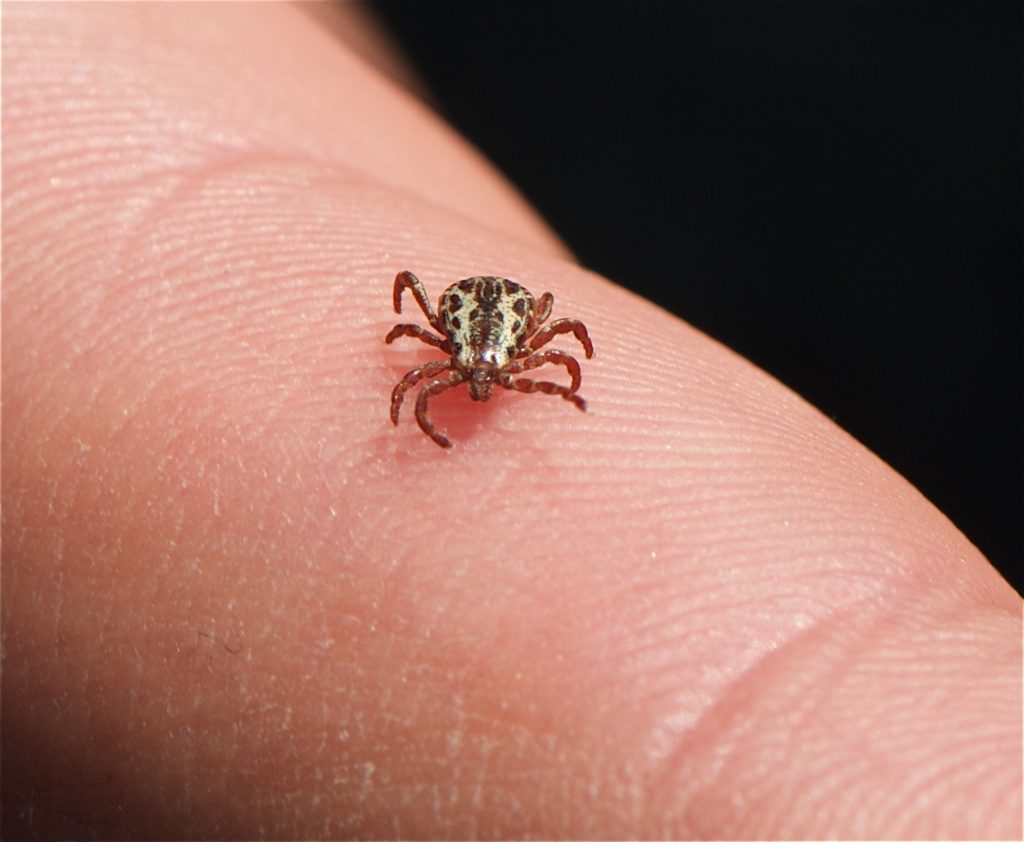
American Dog tick; photo by Jerry Kirkhart from Los Osos, Calif. [CC BY 2.0 (https://creativecommons.org/licenses/by/2.0)] - Rocky Mountain Wood tick

Rocky Mountain Wood tick - Brown Dog tick
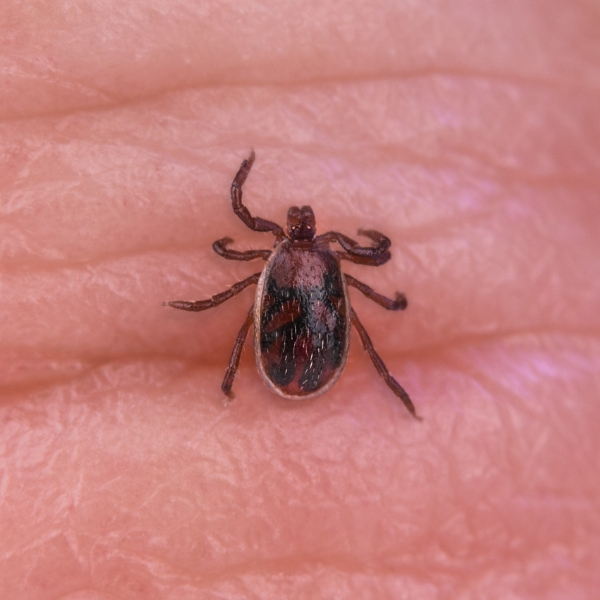
Brown Dog tick
- Ehrlichiosis: Bacterial disease caused by the bacteriums Ehrlichia chaffeensis, E. ewingii, or E. muris eauclairensis. Spread by the infected bite of the Black Legged Deer tick (see above) or the Lone Star tick:
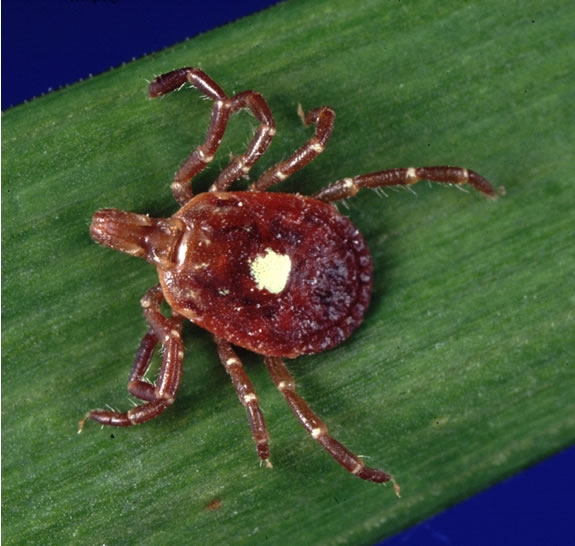
Lone Star tick
Signs and symptoms of infection include flu-like symptoms such as fever, chills, headache, muscle aches, and nausea. Treatment includes antibiotics. - Tick-Borne Relapsing Fever (TBRF): Bacterial infection spread most commonly by the soft-bodied Ornithodoros hermsi tick:
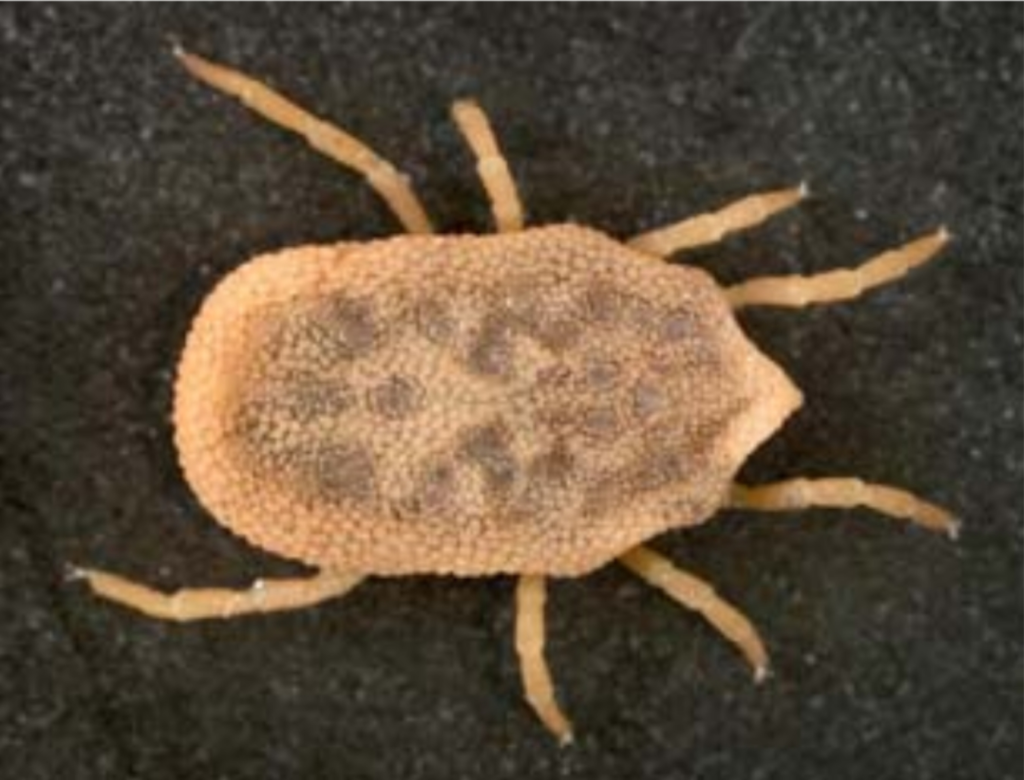
Ornithodoros hermsi tick
However, TBRF can also be spread by two other soft-bodied ticks: the Ornithodoros parkeri and the Ornithodoros turicata:
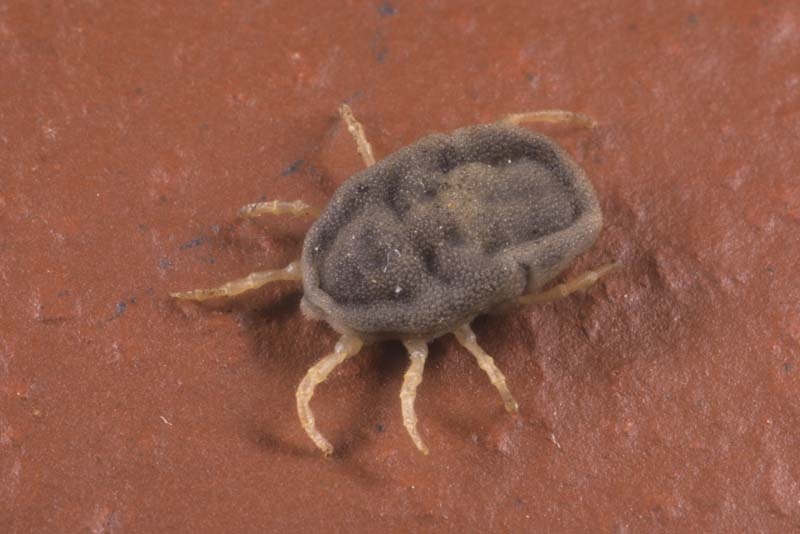
Ornithodoros parkeri tick 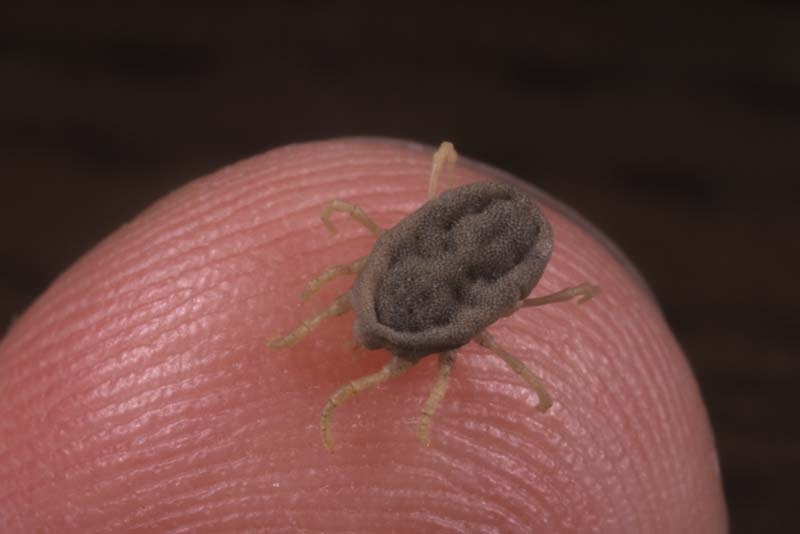
Ornithodoros turicata tick These soft-bodied ticks differ from others in two important ways:
1) they bite only briefly, usually less than half an hour; their bites are painless and, unlike ticks that you may find on your body, you aren’t likely to be aware you’ve been bitten.
2) soft ticks don’t live in tall grass or woods; instead, they live in rodent nests or burrows, coming out at night to feed briefly and often returning to the nesting materials during the day.These important differences mean the people most commonly infected with TBRF are those who are staying in cabins or other structures that are uninhabited much of the year and therefore likely to have large, active rodent nests.
Symptoms of TBRF infection are: high fever, headache, as well as muscle and joint aches. A tell-tale signature of this particular infection is a recurring fever of three days, followed by seven days with no fever, and then the fever coming back again. This can occur several times, if the infection is not caught and treated with antibiotics.
- Babesiosis: This disease is caused by microscopic parasites infecting one’s red blood cells. It’s spread by the bite of an infected Ixodes scapularis tick (a.k.a., the Deer tick or Black Legged tick—see photos above). What’s scary about this one is that it’s the nymph stage when you are likely to get infected, and the tick at this stage is only about the size of a poppy seed! Symptoms are similar to many other tick-borne diseases: flu-like symptoms like fever, chills, headache, nausea, body aches, and fatigue. Because this parasite infects your red blood cells, though, it can also cause anemia.
- Anaplasmosis: A disease caused by the bacterium anaplasma phagocytophilum. It is spread by the bite from a diseased Black Legged (Ixodes scapularis) tick, seen above, or the Western Black Legged tick (Ixodes pacificus):
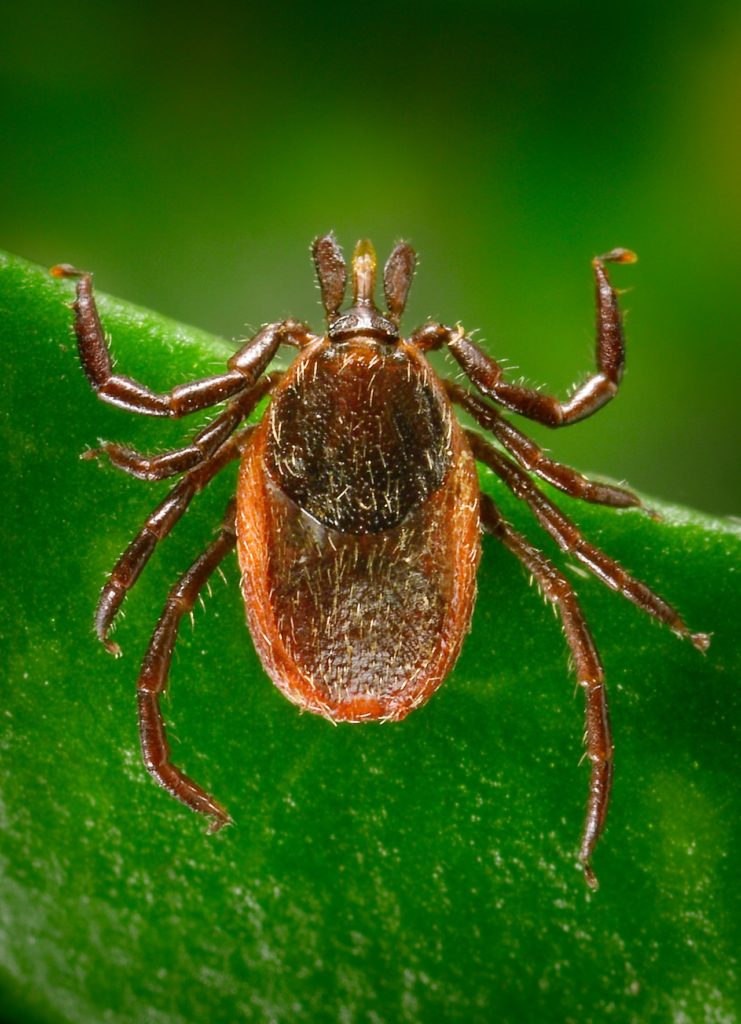
Ixodes pacificus tick
Symptoms include fever, headache, nausea, chills, and aching muscles. It is also treated by antibiotics. The longer you go before treatment, the worse your symptoms become. Left untreated, it can lead to organ failure and death.
- Southern Tick-Associated Rash Illness (STARI): As the name indicates, this illness is associated with a rash. An expanding “bull’s-eye” rash develops in a ring around the bite of a Lone Star tick (see photo above). The ring has been known to expand as large as 3″ in diameter. Other symptoms can be headache, fever, muscle ache and fatigue. The cause of this illness is not known, but since it resembles the symptoms of early Lyme disease, it is often treated with antibiotics.
- Tularemia: This infectious bacterial disease caused by the bacterium Francisella tularensis, has had reported cases in every state of the United States except Hawaii. It is a bacteria spread through tick or fly bites, but you can also get it from drinking contaminated water, or inhaling contaminated dust. Making it a possible potential bio-weapon threat. Its symptoms are sudden fever, chills, headache, diarrhea, muscle aches, joint pain, progressive weakness, and a dry cough. Depending on one’s exposure, you can also develop a sore throat, eye pain, and ulcers on your skin or mouth. It is currently treated with antibiotics.
To wrap it up … yes, ticks are out in droves this summer. Yes, we will probably pull them off ourselves, our pets, and our children at some point during the season. But by being proactive and taking a few preventative steps, we can minimize our exposure, and hopefully avoid being infected with dangerous diseases that I’m sure we would all like to avoid. Have your summer fun, don’t become a recluse out of the fear of ticks, but please be aware of the potential dangers lurking about and take common sense steps to stay safe.
